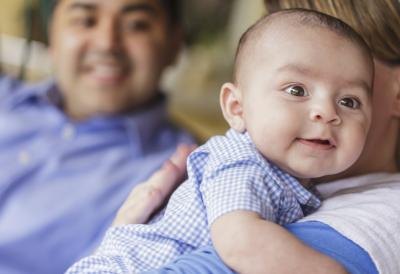
When newborns are feeding, they swallow a lot of air. If your newborn is not properly burped, painful gas and abdominal discomfort may occur. When you are breastfeeding, the timing of burping your newborn can be tricky, since you don’t know the number of ounces the baby is consuming. However, breastfed babies tend to need fewer incidences of burping, since they swallow less air during feedings.
Time Frame
The ideal time to burp a breastfed newborn is when switching breasts. For instance, after feeding your newborn for 10 minutes using your left breast, burp her and then switch to the right breast for the remainder of the feeding. As babies grow older and become better feeders, you may only need to burp the baby once at the end of each breastfeeding session.
Considerations
If your milk is flowing too quickly or if the newborn tends to swallow quickly, he may need to be burped more often. Feeding the baby in an upright position at an angle greater than 45 degrees reduces how much air he takes in while breastfeeding. The baby should also be close to the breast and not dangling away from your chest.
Significance
In the case that the newborn does not burp between breasts or after a feeding, do not force it. Breastfed babies eat smaller and more frequent meals, which causes them to take in less air. When you do burp the newborn, gently pat her back while lying across your lap, propped up over your shoulder or leaned forward while sitting up.
Warning
Unless your baby seems uncomfortable, do not pull him away from the breast for burping. You may find it difficult to get him to latch on again after you have abruptly stopped the feeding. Signs of the baby’s discomfort include squirming, crying or pulling on and off the breast. To remove the baby from your breast without causing discomfort, place your finger in his mouth and gently pull him away from the nipple.
www.livestrong.com





No comments:
Post a Comment